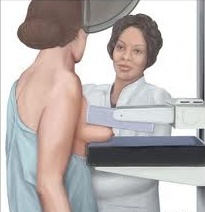.png) |
| Illustration of UTERUS CANCER (ovaries cancer) |
What exactly is UTERUS CANCER (ovaries cancer) ? Do the same with cervical cancer ? Yes, indeed probably many question marks regarding this, Actually, uterine cancer or ovarian cancer, and contains a detailed resemblance with cervical cancer. Until recently, ovarian cancer is known as the "silent killer" since it is usually tough to be detected until a complicated stage. For more details, this i describe a bit by what it turned out ovarian cancer, will help everyone to recognize this cancer. Cervical cancer verdict.
Cervical cancer is usually a malignant tumor in the lining with the uterus (endometrium). Uterine cancer usually occurs after menopause and often attack the caravan of girls aged 50-60 years. Cervical cancer can spread to parts of the body for example the ovaries, fallopian tubes and lymph systems. The precise cause of ovarian cancer is unknown, even so the disease generally seems to involve a rise in levels of estrogen. On the list of normal functions of estrogen is always to stimulate the development from the epithelial lining in the uterus.
Appearance with the uterus and cancer tissue on the Girls that endure uterine cancer has certain risk factors. Risk factors are factors that lead to increased probability of an individual undertake a disease. A number of the risk factors of cervical cancer include age, obesity, DM, hypertension or infertility. Signs and symptoms of cervical cancer include abnormal uterine bleeding, abnormal menstrual cycles, lower abdominal pain or pelvic cramping, pain or difficulty when urinating waste and pain during intercourse.
Every woman should undergo a pelvic exam and pap smear regularly to get any signs of abnormal growth. Girls that have risk factors for cervical cancer should undergo more frequent pelvic exam, pap smear and endometrial biopsy. Cancer in the uterus (womb) is in fact the most common cancer in the endometrium, the spot that the fetus grows. Uterine cancer usually happens in women> 60 years, obesity, early menstruation early age, late menopause, never been pregnant, excessive estrogen stimulation, previous cervical cancer inherited.
Many studies show levels of estrogen are likely involved inside growth and development of cervical cancer. While pregnant, estrogen production increases cancel out the increased manufacture of estrogen progesterone Women while using highest production being offset increased production of progesterone could raise the risk factor. Warning signs of bleeding after menopause irregular menstrual cycles, bleeding between menstrual periods, fishy odor from your vagina, lumbar pain, pain while urinating, pain during intercourse, pain and bleeding during bowel movements. For the diagnosing pelvic examination suggested 1x 1-three years at 18-40 years old each year after age 40 years.
Cervical cancer is usually a malignant tumor in the lining with the uterus (endometrium). Uterine cancer usually occurs after menopause and often attack the caravan of girls aged 50-60 years. Cervical cancer can spread to parts of the body for example the ovaries, fallopian tubes and lymph systems. The precise cause of ovarian cancer is unknown, even so the disease generally seems to involve a rise in levels of estrogen. On the list of normal functions of estrogen is always to stimulate the development from the epithelial lining in the uterus.
Appearance with the uterus and cancer tissue on the Girls that endure uterine cancer has certain risk factors. Risk factors are factors that lead to increased probability of an individual undertake a disease. A number of the risk factors of cervical cancer include age, obesity, DM, hypertension or infertility. Signs and symptoms of cervical cancer include abnormal uterine bleeding, abnormal menstrual cycles, lower abdominal pain or pelvic cramping, pain or difficulty when urinating waste and pain during intercourse.
Every woman should undergo a pelvic exam and pap smear regularly to get any signs of abnormal growth. Girls that have risk factors for cervical cancer should undergo more frequent pelvic exam, pap smear and endometrial biopsy. Cancer in the uterus (womb) is in fact the most common cancer in the endometrium, the spot that the fetus grows. Uterine cancer usually happens in women> 60 years, obesity, early menstruation early age, late menopause, never been pregnant, excessive estrogen stimulation, previous cervical cancer inherited.
Many studies show levels of estrogen are likely involved inside growth and development of cervical cancer. While pregnant, estrogen production increases cancel out the increased manufacture of estrogen progesterone Women while using highest production being offset increased production of progesterone could raise the risk factor. Warning signs of bleeding after menopause irregular menstrual cycles, bleeding between menstrual periods, fishy odor from your vagina, lumbar pain, pain while urinating, pain during intercourse, pain and bleeding during bowel movements. For the diagnosing pelvic examination suggested 1x 1-three years at 18-40 years old each year after age 40 years.
The actual root cause of ovarian cancer is unknown, but the disease seems to be involve an increase in estrogen levels. One of the normal functions of estrogen would be to stimulate the organization of the epithelial lining from the uterus. Signs and symptoms of ovarian cancer will not be specific. Recent surveys have established that cervical cancer patients typically have the following symptoms are settled :
- Abdominal pressure (feeling full, swelling or bloating)
- Feeling the urge to urinate constantly
- Other symptoms include:
- Persistent indigestion (gas or nausea)
- CHAPTER habits change for no apparent reason, including constipation
- Lack of appetite or quickly feeling full
- Pain during intercourse (dyspareunia)
- Limp and exhausted sustainable
- Pain in the community about the waist / hip
- Changes in menstrual period
Signs of Cervical Cancer
Cervical cancer is a kind of cancer can be quite frightening and occur most commonly in women in this particular time period. Many of the reasons for the occurrence of cervical cancer, that happen to be :
- Married in a very young age
- Frequent change of sexual partners
- Herpes within the sex organs
- Gave birth to many children
- Often infected cervix
Disease process would take ages and initially without complaints and symptoms. Therefore often recognized too far gone, need Papaniculau examination (Pap's smear) periodically. New cancer symptoms appear after the cancer entered a professional stage. Initially whitish not itch, but it really smells rotten, could also be bleeding after intercourse, anemia and if your cancer progresses in a chronic stage from the body will decrease the power of endurance, making your body look more thin, weak and pale.
In the event the cancer continues to be the first stages, the cancer be discarded or considered all of ovaries removed. Should you have had stage III and IV, the operation isn't feasible anymore for the reason that cancer had spread everywhere.
When you should For the DOCTOR ?
See your doctor should you experience symptoms of abdominal swelling, bloating, pain inside the abdomen / pelvis continuously for over a few weeks. If the doctor doesn't find cervical cancer diagnosis, be sure you get yourself a second opinion. Sure your medical professional performs a pelvic exam.
Your physician may recommend a number with the following tests to diagnose uterine cancer :
- Ultrasonography (USG)
Tumor marker CA-125. Many women with ovarian cancer have abnormal degrees of CA 125 in their blood.
- CT SCAN or MRI
Detail test leads to cervical cancer, surgery will probably be performed (laparaskopi) which is taken small incisions from the abdomen plus the abdominal cavity exploration to find out if there is cancer. If cervical cancer is confirmed, the surgeon plus the pathologist will identify the type of tumor and whether the cancer has spread.
- STADIUM UTERUS CANCER
- Stage I. cancer is fixed to a single or both ovaries.
- Stage II. The cancer has spread to locations within the pelvis, like the uterus or fallopian tubes.
- Stage III. Cancer has spread to the lining in the abdomen (peritoneum) or to lymph nodes within the abdomen.
- Stage IV. Ovarian cancer has spread to organs beyond your abdomen.
Cervical cancer treatment usually involves a variety of surgery and chemotherapy.
- Surgery
On the whole, patients with ovarian cancer require extensive surgery that included removing both ovaries, fallopian tubes and uterus as well as nearby lymph nodes and also a fold of fatty abdominal tissue referred to as omentum, where ovarian cancer often spreads.
- CHEMOTHERAPY
After surgery, you'll most likely undergo chemotherapy to kill cancer cells remaining. Initial regimen for ovarian cancer has a mix of carboplatin (Paraplatin) and paclitaxel (Taxol) is injected into the bloodstream (intravenously). Unwanted effects - including abdominal pain, nausea and vomiting - may occur.
- RADIATION
Radiation is usually not regarded as being effective for cervical cancer.















